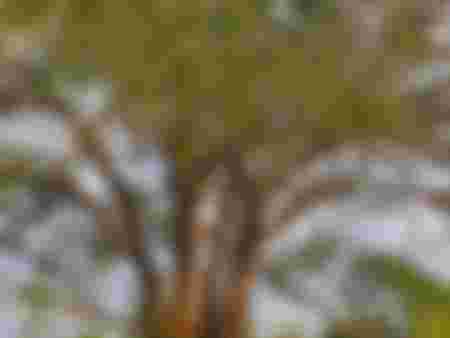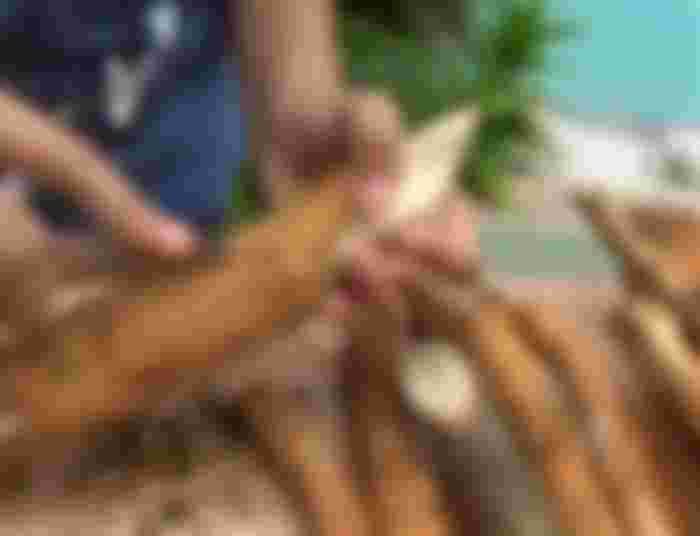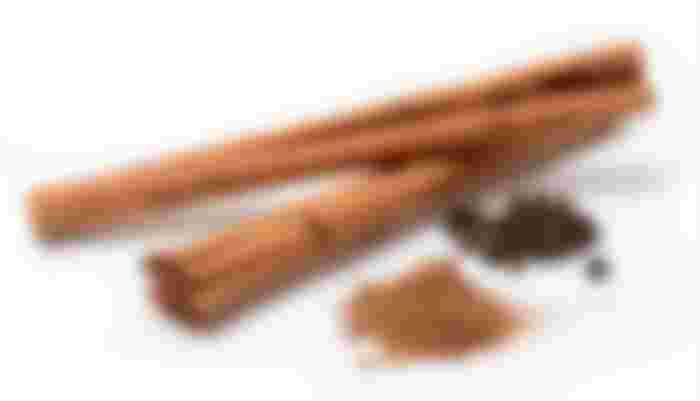Where does cinnamon come from?
Cinnamon, that delicious aroma, that rich flavor that enhances my coffee and many other foods. Where does it come from? How is it produced? The Internet knows everything, but we don't. I had many doubts, so I decided to investigate, I don't know if cinnamon is produced in my country, the answer will be in this article that I decided to do after finishing my research.
Thursday, February 17th
Cinnamon is an aromatic spice known and used for its medicinal properties, characterized by being anti-inflammatory, antioxidant and antimicrobial, also for its many uses in the kitchen, especially in the making of desserts because of its aroma and flavor.
Uses of cinnamon
In many cultures the cinnamon stick is used to flavor infusions, but what I like most is the cinnamon stick in the hot chocolate that my grandmother prepares. My grandmother usually prepares many desserts with the cinnamon stick, in the coconut rice she prepares she also adds the cinnamon stick, but she also adds cinnamon powder. The cinnamon stick is used a lot in preparations of dishes that are based on rice or flour.

In baking I have used cinnamon many times, in almost all the desserts I have prepared I use cinnamon powder, from chocolate cakes, cookies, biscuits, cinnamon is also often added to rice pudding or Venezuelan chicha. Many desserts that I have not prepared but are extremely delicious with cinnamon, such as cinnamon pears, apple pies, cinnamon cupcakes, golfeados, torrijas, etc, etc.

There are a number of sweet and savory dishes that contain cinnamon. In savory dishes, meats are usually flavored with cinnamon, although I have never tried it, I have seen many dishes from other countries that do this, as in different Arab countries. Cinnamon also plays a very important role in North Africa.

But... Where does this delicious ingredient that transforms our food come from?
Cinnamon comes from the bark of a tree that can grow between 10 to 15 meters, but it can also be cultivated in a smaller size as a shrub. This tree is always kept green, its bark is the most important part, since it is a spice of great flavor.

The cinnamon tree is known as cinnamon tree (Cinnamomum zeylanicum or Cinnamomum verum J.Presl) this tree comes from Sri Lanka, a country in Asia that was formerly known as Ceylon, although it is currently cultivated in several tropical countries. Among these countries is Mexico, cinnamon is grown in some areas of Chiapas and Veracruz; Colombia although cinnamon production is quite low, it is grown in some areas of Guatapé, Santander, Cundinamarca; Venezuela in the states of Sucre and Monagas.

Note: The generic name Cinnamomum comes from the Greek Kinnamon or Kinnamomon, which means sweet wood.
How is the cinnamon seen in the stores harvested?
What is harvested from the cinnamon tree is the inner shell of the branches and trunk. These branches have a height of between 2 and a half to 3 meters, and must be more than 3 centimeters thick. The branches are cut about 5 centimeters from the main trunk, then, the bark is lightly scraped, trying to remove the green, thus leaving the little rolls that we know, then the branches are put to dry in the shade and the bark is removed the next day.

To concentrate the aroma, they are put to ferment for a day in a clean and dry container, covering it with leaves from the same tree. Then they are taken out of the container and put to dry in the sun, covering them with a cloth for another 3 or 4 days so that they are well dried and ready to use.

How to plant canelo?
Cinnamon trees can be planted by cuttings, but it is easier to sow the seeds. Cinnamon trees take a long time to grow. When the tree is about 1 year old it should be transplanted to the final planting site. You will have your first cinnamon harvest after approximately 3 or 4 years. Each cinnamon tree is planted leaving a distance of about 3 meters between each tree. The most convenient is that the definitive place where our cinnamon tree will be is around other trees that give shade.

In the first harvest the canelo trees will be at least 3 meters high, the trunk will be about 5 centimeters thick and the thickest branches will be about 3 centimeters thick. Thereafter, harvesting is done every 2 years, twice a year, when the shoots have thickened about 3 centimeters, and the bark has changed to a medium violet or dark green color.
Benefits of cinnamon
1 Helps control diabetes
Some research indicates that cinnamon can help improve the functioning and increase insulin levels, the mechanism by which this occurs, is because cinnamon has the ability to intervene in some components of the body, which make the sugar that is in the blood more easily enter the cells, thus lowering blood sugar.
In addition, the antioxidant and anti-inflammatory activity of cinnamon also influences the proper functioning of the pancreas, which is the organ responsible for producing insulin.
2. Promotes weight loss
Cinnamon has metabolic effects, increases energy expenditure and fat oxidation, so it has a protective effect on obesity, promoting weight loss.
In addition, by improving the sensitivity of tissues to the action of insulin, it reduces the accumulation of fat in the body. Likewise, this spice is rich in fiber, which helps to increase the feeling of satiety, thus reducing hunger and favoring the weight loss process.
3. Protects heart health
Some components of cinnamon are cardioprotective, cinnamon has an anti-inflammatory property and has the ability to produce nitric oxide, a compound that makes arteries relax and blood flow more easily.
4. Helps fight infections
Cinnamaldehyde, one of the main active components of cinnamon, can help fight various types of infections, both bacterial and fungal. Cinnamon's antimicrobial effects also help prevent tooth decay and reduce bad breath.
5. It has antioxidant properties
Several studies conclude that cinnamon has significant antioxidant activity, because it contains phenolic compounds and flavonoids, such as cinnamaldehyde and eugenol, which play a vital role in eliminating free radicals or making them less harmful, preventing them from causing oxidation of fats.
Contraindications
Cinnamon should not be consumed during pregnancy, by people with gastric or intestinal ulcers or who have serious liver diseases.
In the case of babies and children caution should be taken, especially when they have a history of allergy in the family, if they are asthmatic or if they suffer from eczema.

So much for my article today, I hope you liked it and learned about cinnamon, I really found it a very interesting topic. If you liked my topic you can leave me a like or a comment with your opinion, also remember that you can read the articles of my sponsors, I leave them below
See you in the next article!
All content is original
All images were downloaded from the web
The links from where I got the information are shown below
https://www.hogarmania.com/cocina/escuela-cocina/consejos-compra/canela-tipos-cocina-18103.html#:~:text=La%20canela%20en%20rama%20es,aromatizar%20diversos%20platos%20de%20carne.
https://www.directoalpaladar.com/recetario/17-recetas-para-adictos-a-la-canela
https://www.inecol.mx/inecol/index.php/es/ct-menu-item-25/planta-del-mes/37-planta-del-mes/658-canela#:~:text=Cinnamomum%20verum,esun%20condimento%20con%20gran%20sabor.&text=La%20canela%20es%20nativa%20de,cultiva%20en%20varios%20pa%C3%ADses%20tropicales.
https://www.tuasaude.com/es/beneficios-de-la-canela/
http://www.universidadenlinea.com.ve/2011/09/14/cultivo-y-comercializacion-de-especies-aromaticas-tiene-alto-potencial-en-el-oriente-de-venezuela/#:~:text=En%20Venezuela%2C%20concretamente%20en%20los,la%20producci%C3%B3n%20con%20fines%20comerciales.
https://icecu.org/cocina/producir-canela/
https://en.wikipedia.org/wiki/Cinnamomum_verum
Greetings from Venezuela









Very good article, cinnamon is a very exotic spice, that's why its price is so high. Cultivate cinnamon and pepper, you will have income all your life, with little dedication